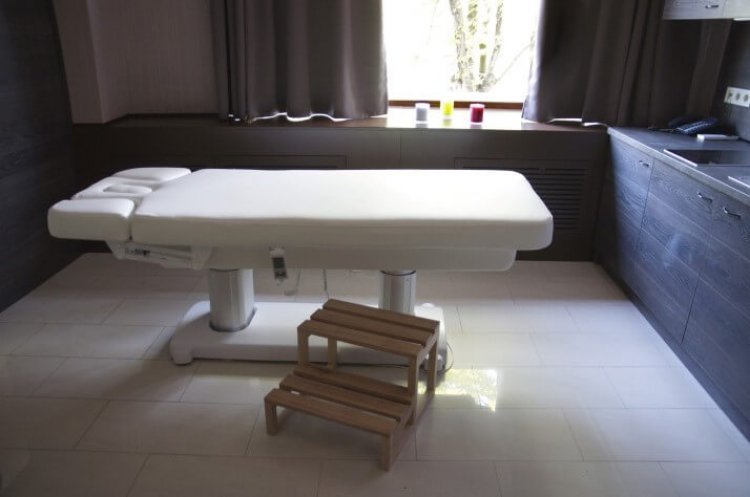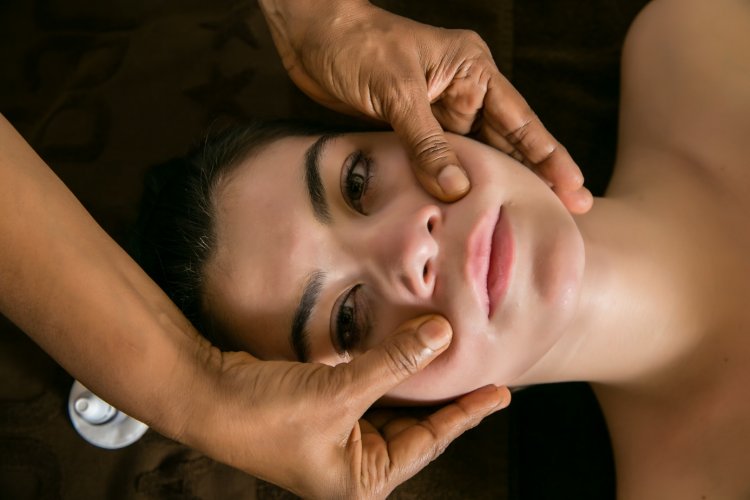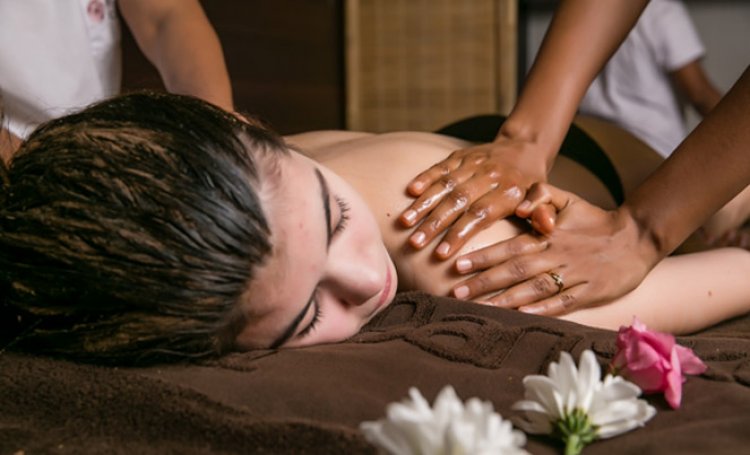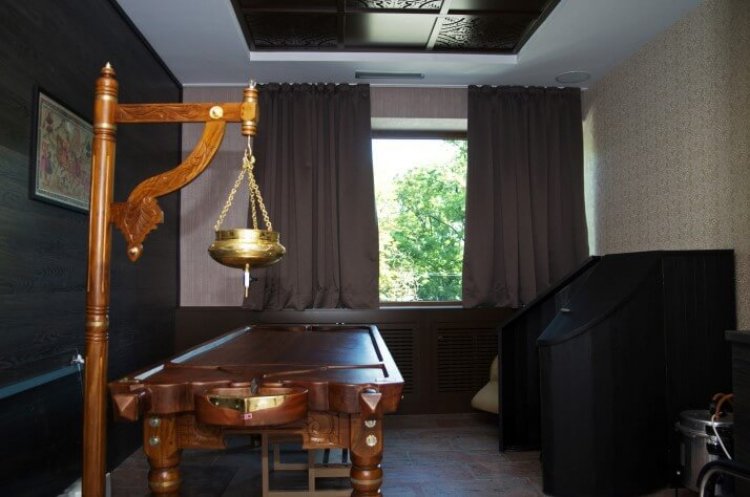There are four main life goals (aspirations of the soul) that, according to Ayurveda, a person has to follow if they want to live a really meaningful life.
Dharma (the first goal) supports our existence. Dharma is morality, piety, responsibility, fulfillment of duty. It’s a natural law on how we treat all other living creatures.
Artha is nothing else but providing of resources for the economic development of a person. It is succeeding in our material world.
Moksha is liberation. Achieving Moksha is difficult and there are not many people who manage to liberate themselves entirely from everything material and giving pleasure and to go along the path of spiritual elevation.
However, we all can achieve Kama (the third goal), we all search for it and need it.
Because Kama is our connection to the rest of the living creatures. Kama is our desire, the satisfaction of our feelings at different levels – delivering physical and mental pleasure, reaching those peaks of delight that make us smile at strangers on the streets.
For life to be full, it must bring us pleasures, and only by achieving Kama it can be truly full.
Ayurvedic massages are not only some of the most enjoyable and effective ways of preserving health and restoring the body, but also the best way to achieve Kama.
Essence of Ayurvedic Massages
The main characteristic of Ayurveda is the understanding of man as a whole: the unity of mind, body and spirit. Health is only possible with a harmonious relationship between the components of the personality. The imbalance between them leads to the emergence of diseases. Ayurveda therapy aims to restore the lost balance. In other words, the therapy addresses the very cause of the disease, not its effects.
According to Ayurveda, the human body is a sacred temple through which the divine spirit is manifested. Separation from the energy source makes it difficult for the body to pass through the body, leading to disharmony and the development of various diseases. The purpose of Indian medicine and its component – Ayurvedic massages is to restore communication with this source and the free passage of the spiritual flow through the body and mind. The effect of the massage is manifested on both the physical and the spiritual level, contributing to the restoration of all systems of the human body.
During the massage, special Ayurvedic oils are used the aroma of which balances the emotional background, soothes the mind and thus contributes to the improvement of the physical condition.
Ayurvedic massages are proven to be helpful, relaxing and health-enhancing, but it is good to go through a preliminary Ayurvedic check-up before heading for a particular massage.
 And an Ayurvedic check-up goes like this…
And an Ayurvedic check-up goes like this…
According to Ayurveda, if we suffer from a disease or do not feel comfortable physically and mentally, this means that there is an imbalance in the constitutions of our Doshas – vata, pitta and kapha.
Pulse diagnostics (nadi pariksha) is the most effective tool in Ayurveda to diagnose diseases and determine where the imbalance is.
The Ayurvedic pulse diagnosis exam is carried out by the specialist putting his fingers on the patient's hand and listening to their body.
Consultation takes place in two parts (stages):
In the first (diagnostic part) the Vedic physician determines our constitution, determines the imbalance (vikruti).
The second part of the consultation includes the preparation of a balance restoration program.
Ayurvedic massages that bring not only pleasure (Kama) but also strengthen health
Face and legs massage
The procedure combines two massage techniques: Mukha Abhyanga and reflex effect on the legs. Massage is done by two masseurs massaging at the same time different parts of the body (the areas of the face and legs). As a result, the client ceases to follow the hands of the masseuses and completely relaxes. This Ayurvedic technique has a multifunctional healing effect as it increases body tone, relieves tension, relieves insomnia and chronic headaches, improves the condition of the facial skin, increases its elasticity, removes puffiness and leg fatigue.
Ratnaabhyanga
This is a relaxing Ayurvedic massage using hot and cold stones.
The warm stones are of volcanic origin; their heat penetrates to a depth of four or more centimeters. They expand blood vessels, strengthen blood circulation, relieve tension and pain in muscles, stimulate metabolic processes, renew the whole body, bring a sense of peace.
Cold stones are mostly marble pieces. The contrast effect of cold after hot stone massage relieves venous stasis, increases muscle tone and has a positive effect on the skin.
Kizhi
This type of massage is done using hot herbal bags. The goal is to remove pain in the back and joints, skin rejuvenation, complete body recovery, stress relieving.
Kizhi combines the positive effects of the oil massage and herbal healing. Bags filled with spices and medicinal herbs are used for the procedure. Most often these are turmeric, sage, ginger, sesame and lavender. To improve the healing effect,essential oils of grapefruit, lemon, rosemary, vanilla, etc. are added.
Ayurvedic body massage with herbal bags has a distinct anti-stress effect, stimulates lymphatic drainage, blood circulation, metabolic processes, strengthens the immune system, tones the muscles, moisturizes the skin and increases its elasticity.
 Mukha Abhyanga
Mukha Abhyanga
This is a special Ayurveda massaging technique for the area of the head, face, neck and the neckline with the use of therapeutic oils that have local and reflex effect. The local effect is rejuvenation and lifting of the facial skin, and the reflex effect is on the whole body. Mukha Abhyanga is used to relieve stress, improve nutrition and rejuvenate the skin, relieve swelling, normalize sleep and emotional background.
The results achieved with Mukha Abiang are:
• purifying and nourishing the facial tissues;
• maintaining the tone and elasticity of all layers of the skin;
• restoring the oval of the face;
• relieving muscle tension;
• smoothing of wrinkles;
• correction of the direction of fine wrinkles;
• elimination of tension in the body;
• filling the body with energy;
• enriching the inner world;
• awakening the desire to care for others.
 Shirodhara
Shirodhara
This is a unique Ayurvedic relaxing head massaging technique (translated from Sanskrit “shir” means “head” and “dhara” – “flow”).
During the session, hot oil is poured onto the active points of the head in a thin jet. Combined with herbs, this effect [sic: massage] has a beneficial effect on the body at physical and energy level, balances thoughts, soothes and harmonizes emotions. There is also a significant improvement in physical condition.
Honey massage
The purpose of the honey massage is the energy nutrition of the skin and the organs of body and the purification of the energy channels. The procedure improves the blood flow towards the skin and muscles, stimulates lymph flow and metabolism, helps eliminate swelling, accelerates the elimination of unnecessary waste from the body, prevents salt deposition and has an anti-cellulite effect.
Honey massage is an excellent remedy for a number of diseases and pathological conditions such as:
• physical and mental fatigue;
• psychosomatic illnesses;
• osteochondrosis and other pathologies of the spine;
• osteoarthritis;
• radiculitis;
• bronchitis;
• pneumonia;
• prolonged cough.
In addition, the massage removes cellulite and prevents the appearance of "orange skin" and fat deposits.
 Marma
Marma
This is the oldest Ayurvedic technique known to date to replenish and restore vital energy. During the massage there is an effect on the marma – special points on the surface of the body through which it is possible to affect the endocrine system, muscles, internal organs, tissues and even the deep structures of the brain.
The special technique of marma massage harmonizes energy, restores the functions of the internal organs, relaxes and tones the body, activates mechanisms of self-healing, relieves anxiety, soothes and normalizes sleep.

 And an Ayurvedic check-up goes like this…
And an Ayurvedic check-up goes like this… Mukha Abhyanga
Mukha Abhyanga Shirodhara
Shirodhara Marma
Marma
0 Comments